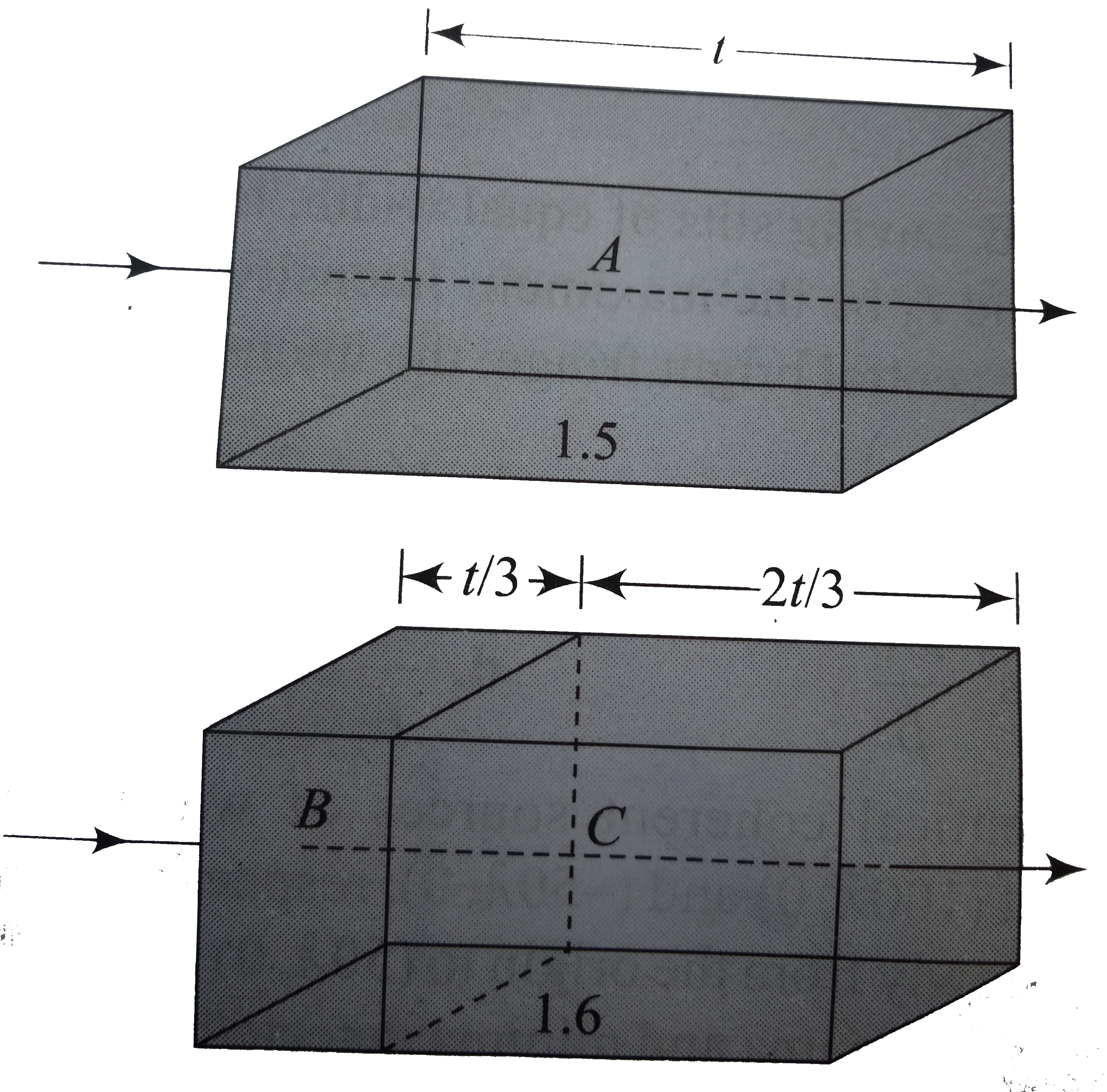A spot is placed on the bottom of a slab made of transperent material of refractive index 1.5. The spot is viewed vertically from the top when it seems to be raised by 2 cm. Then, the height of the slab is
10 cm
8 cm
6 cm
4 cm
The correct Answer is:C
(c ) We have, dapp=dµ
or (d−2)=d1.5
∴ d=6 cm
Topper's Solved these Questions
- RAY OPTICSBOOK - DC PANDEYCHAPTER - RAY OPTICSEXERCISE - Checkpoint 9.4
20 Videos
- RAY OPTICSBOOK - DC PANDEYCHAPTER - RAY OPTICSEXERCISE - Checkpoint 9.5
10 Videos
- RAY OPTICSBOOK - DC PANDEYCHAPTER - RAY OPTICSEXERCISE - Checkpoint 9.2
10 Videos
- NUCLEIBOOK - DC PANDEYCHAPTER - NUCLEIEXERCISE - C MADICAL ENTRANCES GALLERY
46 Videos
- REFLECTION OF LIGHTBOOK - DC PANDEYCHAPTER - REFLECTION OF LIGHTEXERCISE - Subjective
9 Videos
Similar Questions
An equilateral glass prism can produce a minimum deviation of 30° to the path of an incident ray. A transpar- ent slab of refractive index 1.5 is placed in contact with one of the refracting faces of the prism. Thickness of the slab is 3 cm. Now calculate the minimum possible deviation which can be produced by this prism-slab combination.

View SolutionCalculate the shift produced by the slab having thickness 15cm and refractive index 1.5 which is kept in air.
View Solution
Knowledge Check
A point source S is placed at the bottom of a tranparent block of height 10mm and refractive index 2.72. It is immersed in a lower refractive index liquid as shown in the figure. It is found that the light emerging from the block to the liquid forms a circular bright spot of diameter 11.54 mm on the top of the block. The refractive index of the liquid is
 A1.21B1.3C1.36D1.42
A1.21B1.3C1.36D1.42A ray of light 10−9 second to cross a glass slab of refractive index 1.5. The thickness of the slab will be
A0.1 mB0.2 mC0.3 mD0.4 mA small ink dot on a paper is seen through s glass slab of thickness 4cm and refractive index 1.5. The dot appears to be raised by
A1cmB2cmC3cmD1.33cm
A postal stamp is placed on a surface and a glass cube of refractive index 32 is placed over it. When observed through the glass slab, the stamp appears at a height of 1.5 cm from the bottom. Another glass cube made of different material nad having the same thickness is placed over the first glass cube. When observed from the top, the stamp now appears to be at a height of 4 cm from the bottom. Determine the refractive index of the second galss cube.
View SolutionA glass slab made of a material of refractive index n1 is kept in a medium of refractive index n2.
A light ray is incident on the slab. Draw the path of the rays of light emerging from the glass slab, if n1=n2
View SolutionA glass slab made of a material of refractive index n1 is kept in a medium of refractive index n2.
A light ray is incident on the slab. Draw the path of the rays of light emerging from the glass slab, if n1<n2
View SolutionA glass slab made of a material of refractive index n1 is kept in a medium of refractive index n2.
A light ray is incident on the slab. Draw the path of the rays of light emerging from the glass slab, if n1>n2
View SolutionTwo transparent slabs have the same thickness as shown in figure. One in made of material A of refractive index 1.5. The other is made of two materilas B and C with thickness in the ratio 1:2. The refractive index of C is 1.6. If a monochromatic parallel beam passing through the slabs has the same number of wavelengths inside both, the refractive index of B is

View Solution
